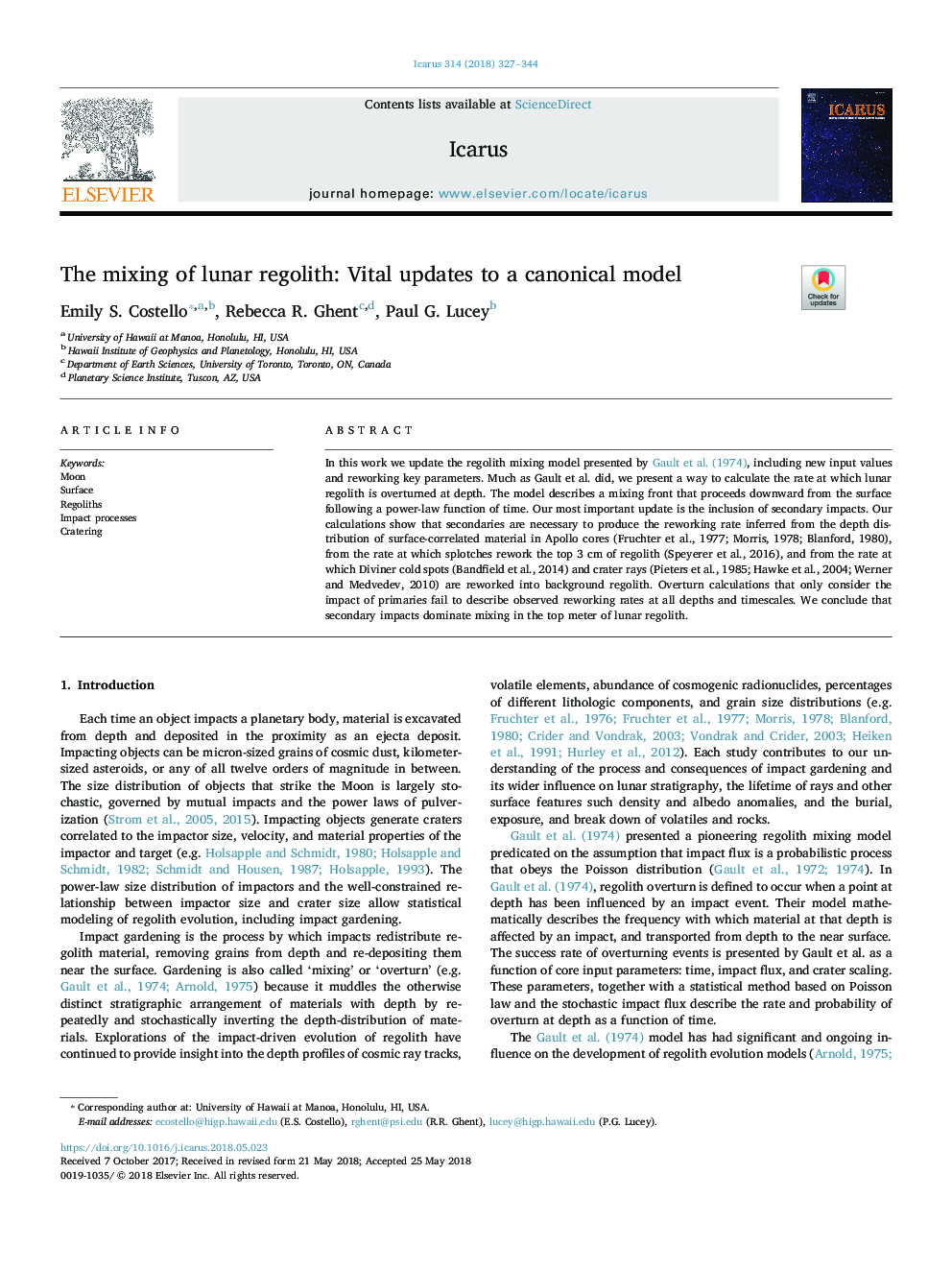| Article ID | Journal | Published Year | Pages | File Type |
|---|---|---|---|---|
| 8133878 | Icarus | 2018 | 18 Pages |
Abstract
In this work we update the regolith mixing model presented by Gault et al. (1974), including new input values and reworking key parameters. Much as Gault et al. did, we present a way to calculate the rate at which lunar regolith is overturned at depth. The model describes a mixing front that proceeds downward from the surface following a power-law function of time. Our most important update is the inclusion of secondary impacts. Our calculations show that secondaries are necessary to produce the reworking rate inferred from the depth distribution of surface-correlated material in Apollo cores (Fruchter et al., 1977; Morris, 1978; Blanford, 1980), from the rate at which splotches rework the top 3 cm of regolith (Speyerer et al., 2016), and from the rate at which Diviner cold spots (Bandfield et al., 2014) and crater rays (Pieters et al., 1985; Hawke et al., 2004; Werner and Medvedev, 2010) are reworked into background regolith. Overturn calculations that only consider the impact of primaries fail to describe observed reworking rates at all depths and timescales. We conclude that secondary impacts dominate mixing in the top meter of lunar regolith.
Related Topics
Physical Sciences and Engineering
Earth and Planetary Sciences
Space and Planetary Science
Authors
Emily S. Costello, Rebecca R. Ghent, Paul G. Lucey,
